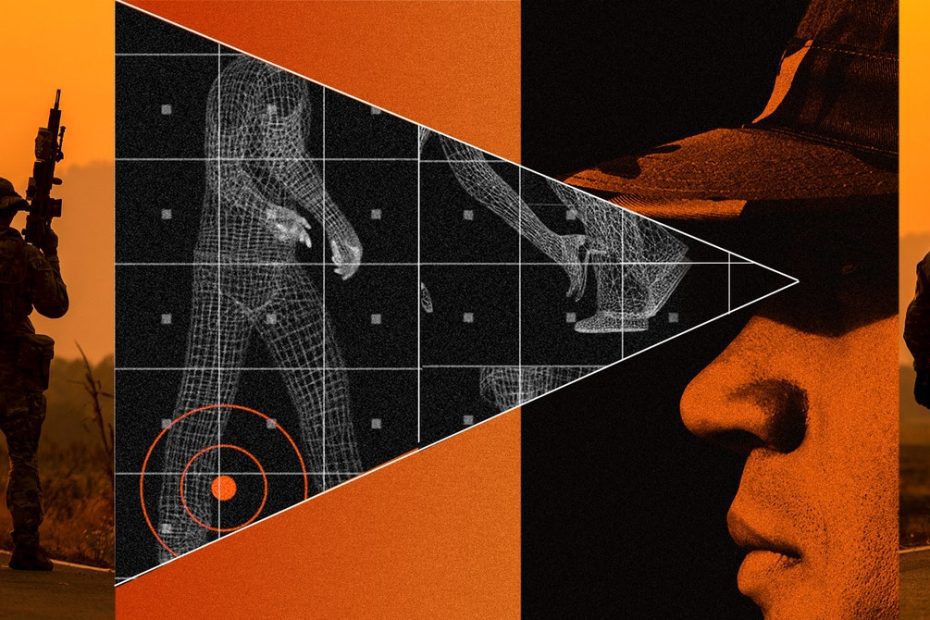Day is slowly turning to night, and the American special operators are worried. They are deployed to a densely populated urban center in a politically troubled region, and local activity has become increasingly hectic in recent days, with the streets and markets crowded with more than the usual hustle and bustle of city life. Intelligence suggests that the threat level in the city is high, but details are sketchy and the team must keep a low profile: a firefight could send known hostile elements their way. In order to assess potential threats, the Americans decide to take a more cautious approach. Eschewing conspicuous tactical gear in favor of blending into potential crowds, one operator steps out onto the neighborhood’s main street to see what he can see.
With the click of a button, the Operator sees… everything. A complex array of sensors attached to his head-up display begins sucking in information from the world around him. Body language, heart rate, facial expressions, even ambient snippets of conversation in local dialects are quickly collected and fed into his backpack supercomputers for processing by a built-in artificial intelligence engine. The information is instantly analyzed, streamlined, and fed back into the head-up display. The assessment from the Operator’s tactical AI sidekick is clear: a series of seasonal events are coming to town, and most passersby are excited and exuberant, posing minimal threat to the team. Crisis averted—for now.
It's one of many possible scenarios that have been repeatedly presented by Defense Department officials in recent years as they discuss the future of America's special operations units, those elite troops tasked with facing the world's most complex threats head-on as the “tip of the spear” of the U.S. military. Defense officials and science fiction writers alike may have imagined a future of warfare shaped by brain implants and performance-enhancing drugs, or armor pulled straight from Spaceship Troopersbut according to the U.S. Special Operations Command, the next generation of armed conflict will be fought (and hopefully won) with a relatively simple concept: the “hyper enabled operator.”
More brains, less muscle
The hyper-enabled operator (HEO) concept was first introduced to the public in a 2019 essay for Small Wars Journal by officials from SOCOM’s Joint Acquisition Task Force (JATF). It’s the successor to the Tactical Assault Light Operator Suit (TALOS) effort launched in 2013, which aimed to equip U.S. special operations forces with a so-called “Iron Man” suit. Inspired by the 2012 death of a Navy SEAL during a hostage rescue operation in Afghanistan, TALOS was intended to improve operators’ survivability in combat by making them virtually impervious to small arms fire through additional layers of advanced armor, the latest installment in the Pentagon’s decades-long effort to build a powered exoskeleton for infantry troops. Although the TALOS effort was declared dead in 2019 due to challenges in integrating the various systems into one cohesive unit, lessons learned from the program led to the HEO as a natural successor.
The primary goal of the HEO concept is simple: to give warriors “cognitive superiority” on the battlefield, or “the ability to dominate the situation by making informed decisions faster than the adversary,” as SOCOM officials call it. Rather than giving U.S. special operations forces physical advantages through body armor and exotic next-generation weaponry, the future operator will enter the fight armed with technologies designed to elevate their situational awareness and relevant decision-making to a higher level than their opponents. Former fighter pilot and Air Force Colonel John Boyd proposed the “OODA loop” (observe, orient, decide, act) as the key military decision-making model of the 21st century; the HEO concept seeks to use technology to “tighten” that loop to the point where operators literally make smarter, faster decisions than the enemy.
“The goal of HEO,” as SOCOM officials put it in 2019, “is to get the right information to the right person at the right time.”
To achieve this goal, the HEO concept calls for swapping the powered armor at the heart of the TALOS effort for advanced communications equipment and a robust sensor suite built on advanced computer architecture, allowing the operator to suck in relevant data and distill it into actionable information via a simple interface such as a heads-up display – and to do this “at the edge,” in places where traditional communications networks might not be available. If TALOS was envisioned as an “Iron Man” suit, as I’ve noted before, then HEO is essentially Jarvis, Tony Stark’s built-in AI assistant, constantly feeding him information via his helmet’s heads-up display.

